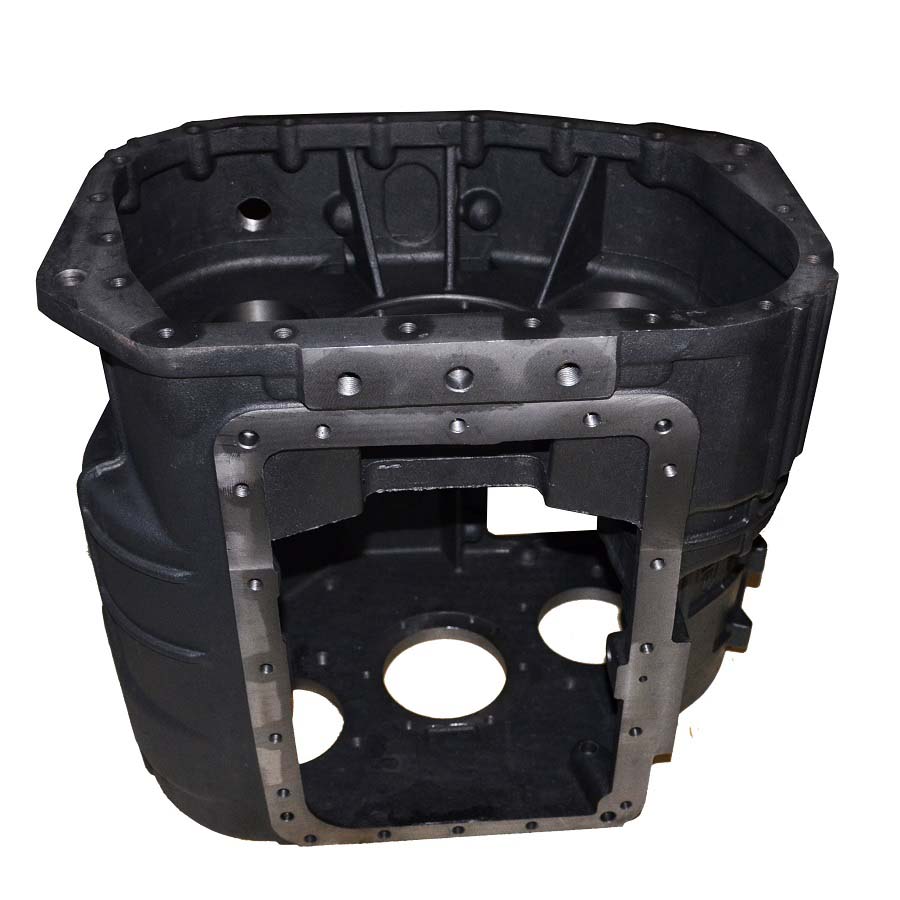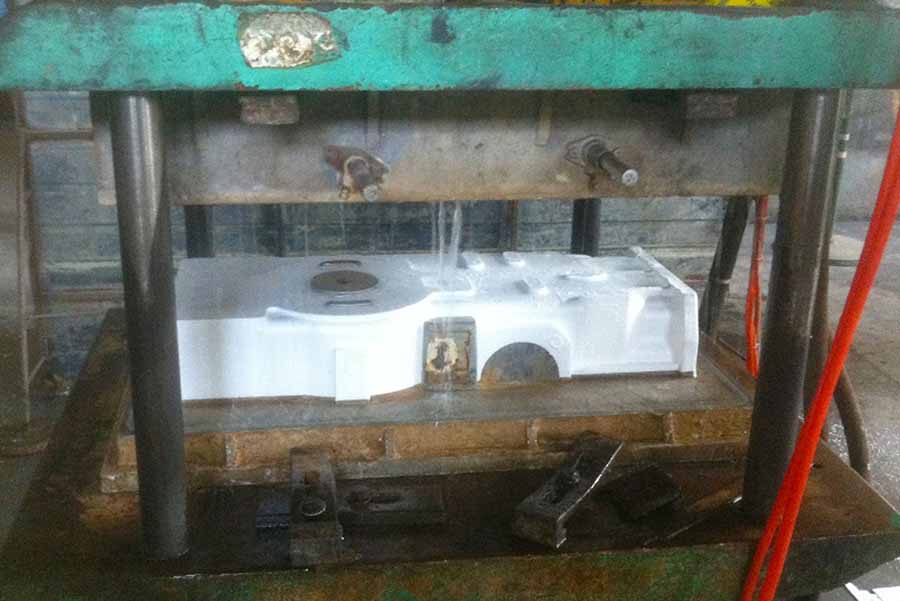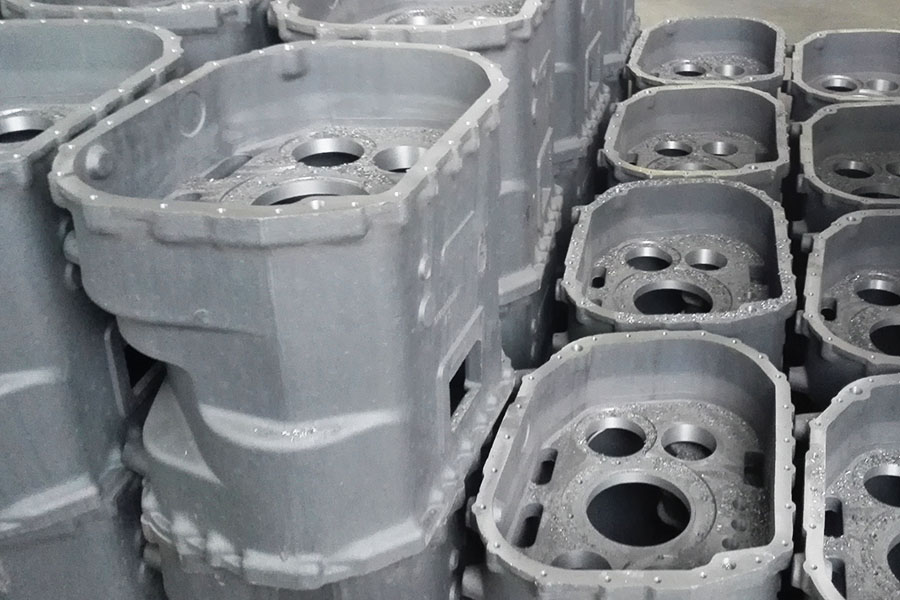
OEM Custom Casting Parts
Material: Gray Iron GG25, EN-GJL-250, HT250 Process: Lost Foam Cast + CNC Machining Weight: 6 kg Application: Gearbox Housing of Truck Parts
OEM Custom Casting Parts by Lost Foam Casting Process from China Casting Foundry Company.
OEM Custom Lost Foam Castings from China Casting Foundry Company
During lost foam casting process, the sand is not bonded by adhensive materials, but a foam pattern is used to form the shape of the desired metal parts. The foam pattern is "invested" into the sand at the Fill & Compact process station allowing the sand into all voids and supporting the foam patterns external form.
Before making the foam patterns, the lost foam casting foundry should finish the process of pre-foam. The original beads are heated to above the softening point to quickly vaporize and expand the foaming agent, forcing the beads to reach the foaming density required by the foam template, and then quickly cool to stop the foaming of the foam beads and maintain the pre-expanded volume.
Lost Foam Casting vs Vacuum Casting
Item
Lost Foam Casting
Vacuum Casting
Suitable Castings
Small and medium-sized castings with complex cavities, such as engine block, engine cover
Medium and large castings with few or no cavities, such as cast iron counterweights, cast steel axle housings
Patterns and Plates
Foam patterns made by moldings
Template with suction box
Sand Box
Bottom or five sides exhaust
Four sides exhaust or with exhaust pipe
Plastic Film
The top cover is sealed by plastic films
All sides of both halves of sand box are sealed by plastic films
Coating Materials
Water-based paint with thick coating
Alcohol-based paint with thin coating
Molding Sand
Coarse dry sand
Fine dry sand
Vibration Molding
3 D Vibration
Vertical or Horizontal Vibration
Pouring
Negative Pouring
Negative Pouring
Sand Process
Relieve negative pressure, turn over the box to drop sand, and the sand is then reused
Relieve negative pressure, then the dry sand falls into the screen, and the sand is recycled
▶ Ferrous & Non-Ferrous Metals for Lost Foam Casting (LFC):
- Carbon Steel: Low carbon, medium carbon and high carbon steel from AISI 1020 to AISI 1060.
- Cast Iron: Cast Gray Iron, Cast Ductile Iron, White Iron, Malleable Iron...etc.
- Aluminium and Its Alloys.
- Cast Steel Alloys: ZG20SiMn, ZG30SiMn, ZG30CrMo, ZG35CrMo, ZG35SiMn, ZG35CrMnSi, ZG40Mn, ZG40Cr, ZG42Cr, ZG42CrMo...etc on request.
- Stainless Steel: AISI 304, AISI 304L, AISI 316, AISI 316L and other stainless steel grade.
- Brass & Copper.
- Other Materials and Standards on request
▶ Capabilities of Lost Foam Casting
- Max Size: 1,000 mm × 800 mm × 500 mm
- Weight Range: 0.5 kg - 100 kg
- Annual Capacity: 2,000 tons
- Tolerances: On Request.
▶ Procedure of Lost Foam Casting
During lost foam casting process, the sand is not bonded and a foam pattern is used to form the shape of the desired metal parts. The foam pattern is "invested" into the sand at the Fill & Compact process station allowing the sand into all voids and supporting the foam patterns external form. The sand is introduced into the flask containing the casting cluster and compacted to ensure all voids and sapes are supported.- Mold foam pattern making.
- Age pattern to allow dimensional shrinkage.
- Assemble pattern into a tree
- Build cluster (multiple patterns per cluster).
- Coat cluster.
- Foam pattern coating.
- Compact cluster in flask.
- Pour molten metal.
- Extract cluster from flasks.
▶ Inspecting Lost Foam Castings
- Spectrographic and manual quantitative analysis
- Metallographic analysis
- Brinell, Rockwell and Vickers hardness inspection
- Mechanical property analysis
- Low and normal temperature impact testing
- Cleanliness inspection
- UT, MT and RT inspection
▶ Post-Casting Process
- Deburring & Cleaning
- Shot Blasting / Sand Peening
- Heat Treatment: Normalization, Quench, Tempering, Carburization, Nitriding
- Surface Treatment: Passivation, Andonizing, Electroplating, Hot Zinc Plating, Zinc Plating, Nickel Plating, Polishing, Electro-Polishing, Painting, GeoMet, Zintec.
- Machining: Turning, Milling, Lathing, Drilling, Honing, Grinding.
▶ Why You Choose RMC for Custom Lost Foam Casting Parts?
- Greater design freedom in the construction of cast parts
- Small quantity is possible due to the layered structure of the pattern.
- Lower need for secondary machining with near net shape.
- High flexibility by short start up lead time.
- Longer EPS mould span life, thus lower average tool costs
▶ General Commerial Terms
- Main workflow: Inquiry & Quotation → Confirming Details / Cost Reduction Proposals → Tooling Development → Trial Casting → Samples Approval → Trial Order → Mass Production → Continuous Order Proceeding
- Leadtime: Estimatedly 15-25 days for tooling development and estimatedly 20 days for mass production.
- Payment Terms: To be negotiated.
- Payment methods: T/T, L/C, West Union, Paypal.
 русский
русский





